I remember that first saltwater flats trip I packed for several years back. Not only did I start piling gear together several weeks out, I racked up way too much credit card debt buying everything from uber-pricey saltwater reels to discontinued flats booties that all but cratered four days into the journey.
Oh, and I didn’t catch a single bonefish. Not a damn one. A literal perfect storm of March winds and rain coincided with a novice saltwater cast and simple fate. And I heard the exclamation, “Don’t trout set!” just a bit too late. It was decidedly tough fishing for everybody that week in the southern Bahamas, but it was decidedly impossible for a small-stream creek freak with a sketchy double haul and virtually no fisheye. Even a tumbler full of rum spilled over the deck into the Caribbean as a sacrifice to the bonefish gods failed to turn the tide.
As I write this, I’m two days away from jetting off to the Yucatan for two weeks, and I haven’t even pulled a sock from the drawer. Not that I’ll need socks, really. It’s just that I’ve come to realize that preparation, while important, need not come at the expense of a maxed out Visa or your sanity. And it helps to have done this trip before, of course.
The nervous jitters are gone—since that first trip, I’ve managed to bring a lot of saltwater critters to hand, including bones, tarpon, snook … even permit. I know my limitations, and I am putting a lot of trust in the guides who’ll be steering us through the mangrove islands and creeks of Mexico’s Ascension Bay. I’m by no means a flats expert—I’m an enthusiastic journeyman with more imagination than money, and I’m lucky enough to earn a trip like this every other year or so.
The flats—no matter where you find them in the warmer climes—are incredible places to cast a fly line, even if you cast it poorly. With guidance and patience, you’ll see a vast, salty desert transform into a fishy super highway right before your very eyes. What, moments before, was a little chop in the distance becomes a school of two dozen five-pound bonefish or, if you’re really lucky, a cruising pod of skeptical permit rooting through mud and grass for crabs. It takes a bit of time, but, in good conditions, the fisheye comes along, and so do fish.
From the bird’s eye view of the casting platform, it’s much easier to see fish and gauge casts, but it’s not very intimate. Until your feet are firmly rooted in the sand and the mud, you’re not really in the environment—you’re not sharing the water with the fish you’re after. I’m sure it lowers your odds, frankly, but there’s something to be said for standing in the same water the fish in which the fish are swimming.
All that aside, it does pay to be prepared, even if you only set aside a few hours to do it. Here’s where to start:
Long pants, long sleeves
No shorts. Unless you’re not at all susceptible to the sun, you should plan to fish in light-weight fishing pants and not in shorts. Bring the shorts for the time you’ll spend around the lodge or on the beach, but when you’re fishing, you’re catching rays from two sources—the sun itself, and the sun’s reflections off the water.
Sunscreen, a hat AND Buff or a bandana
I’m a fair-skinned guy with western European lineage—I burn if I think about sunshine. Not only do I try and wear a hat, but I wear a Buff, too, to shield my face from reflective rays. And that’s on top of some high SPF sunscreen (usually 50 or above). Consider, too, a pair of sunsleeves that cover the backs of your hands. Tempting cancer is a bad idea.
Lip Balm
Wind, sun and salt can play havoc on your lips, making it essential to protect them. Bring lip balm that is SPF rated, and wear it.
Bug spray
In much of the tropics, the infective Zika virus is becoming more prominent. the Center for Disease control just issued a travel warning for tourists visiting many tropical destinations. The virus, spread by mosquito bites, can cause microcephaly in newborn babies of infected mothers, and news was just released that the virus can now be sexually transmitted. Better to be safe than sorry.
Flats boots or booties
You’ll see a lot of the guides wading barefoot, but keep in mind they know the water and what to expect. A friend of mine, an experienced guide out of Akumal on the Mayan Riviera, is, as I write this, dealing with the nasty effects of a stingray puncture on the top of his foot. Wear the correct footwear (and know how to determine what flats shoes are best). Just in case.
Polarized sunglasses
This one’s obvious. If you can’t see the fish, you likely won’t catch the fish. Don’t skimp, either. They literally can be the difference between success and failure. Need recommendations? Check out our list of the best fishing sunglasses which contains specific recommendations for a variety of fishing scenarios, including flats fishing.
Rods, Reels and Lines
Unless your guide or your lodge is providing gear, you’ll potentially need a pretty impressive quiver for your average flats trip. If you're heading on a strictly bonefishing trip, then you can get away with a single rod or two at the most, but if you're planning on targeting multiple species (e.g. bonefish, permit and snook), you'll want to bring along at least a couple of rod options. Generally, rods ranging from 7- to 9-weights with cover most bases. You might be able to get away with a 6-weight on the odd, windless day, and if you’re OK adding more bulk to your baggage, bring it. You’ll need corresponding reels (preferably heavy-duty versions with protective construction to limit or eliminate saltwater contact with moving parts). They can be expensive, but a good one will last a lifetime. Lines, too, should be considered. There are a number of saltwater lines on the market—most are very dependable. Considering that wind is almost always a constant, it’s not a bad idea to “over line” a rod, too, so that might help you as you make decisions on how many lines/reels/spools to bring. You likely won’t need specific bonefish or saltwater leaders, but you might consider some bite tippet or even some wire, just in case you have the chance to go after some of the salt’s toothier critters. I often just use 30-pound Maxima at the butt section, tapered to 15-pound leader and then 10-pound tippet. For barracudas, you’ll need at least 30-pound bite tippet, but wire is even better.
UV Knot Sense
Fish of the flats aren't sissies and, unlike most trout, they're going to test your knots. Weak or compromised knots mean lost fish, and possibly lost fly lines. Should you need to swap lines, end up with a broken welded loop or need to do any other type of on-the-water repairs to your rigs, having a tube of UV knot sense and a UV light can be incredibly handy. It's seriously strong, cures in seconds, and will significantly reinforce your knots.
Flies
I love to tie saltwater flies—they’re bigger and easier to tie. Everything from Clousers to baitfish patterns to simple patterns like the Shminnow and the Gotcha in sizes ranging from 0 to 8 should be in your box. A couple of years ago, I had a single, super-shiny size 4 baitfish pattern that we used to nail a big barracuda and a 15-pound jack (it’s not all about the bones and permit). And when it was gone, it was gone. If you don’t tie, be prepared to spend a pretty penny at the local fly shop. Some guides will have flies, but not all of them, talk to the folks where you're headed and know what flies you need before you go.
Booze
You can get some solid deals at the duty-free liquor store in the airport, or you can just wait until you arrive in your destination. Rum and tequila taste better in the tropics. Save the whiskey for a trout trip.
What else
Don’t forget your passport and some cash, just in case. And don’t forget your prescription meds.
That should be a good start. You’ll likely have to fight the urge to overpack. The good news is that fishing pants and shirts are pretty light, and you’ll probably want to go big on the gear to account for most of the weight in your bag. Two or three pairs of fishing pants should suffice (you can do some quick shower laundry if need be), and the same number of shirts. Pack t-shirts, shorts and flipflops for lounging around the lodge and drinking margaritas.
They key for me, with several saltwater trips under my belt, is not overthinking it. I’ve gotten to where I can compile just about 50-pounds of gear in a single checked bag, with a few extra items in the carry-on. And I can do it affordably, in a matter of an hour or two, depending on the duration of the trip.
Packing is a necessary evil, but I really don’t mind it. It’s part of the journey of course, and I kind of feel like packing marks the start of my adventure.
And that’s what it’s all about, right?






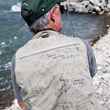



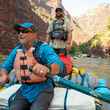
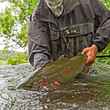




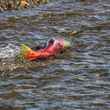



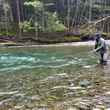
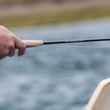



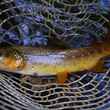

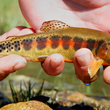
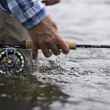
Comments
Anonymous replied on Permalink
Well-timed advice. I'm contemplating the same and will try to get a week's worth in a Patagonia Stormfront Roll Top Backpack and an Orvis Safe Passage Carry-It-All. Nothing checked. Traveling light.
Be sure to keep them feet covered, big boy.
Pages